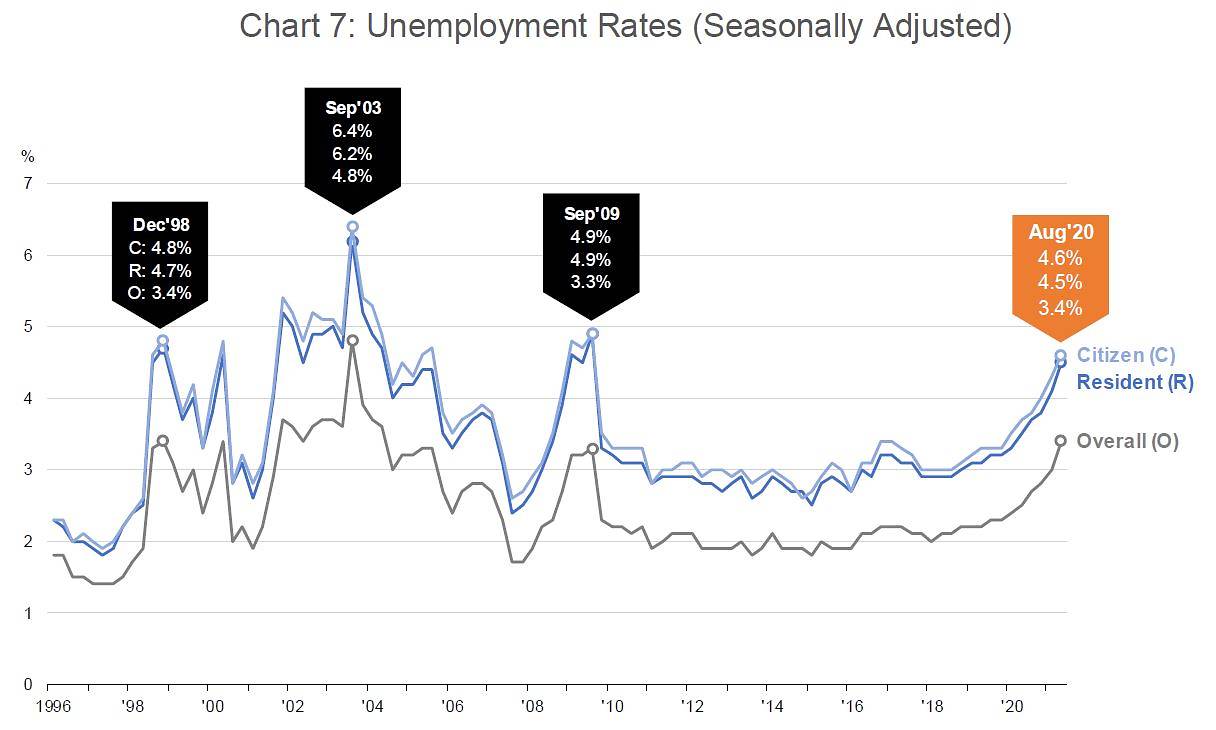Singapore
Overall unemployment rate climbed to 3.4% in August, and it “remains to be seen” if it will rise more quickly in the coming months, said the Manpower Ministry.
People are seen at Raffles Place in Singapore on Sep 15, 2020. (Photo: AFP/Roslan Rahman)
SINGAPORE: Singapore’s overall unemployment rate rose to 3.4 per cent in August, climbing past the high of 3.3 per cent recorded in September 2009 during the global financial crisis.
But August’s rate is lower than the highest overall unemployment rate of 6.4 per cent, recorded in September 2003 during the SARS outbreak.
The latest jobs situation report from the Ministry of Manpower (MOM) on Wednesday (Oct 7) showed the overall unemployment rate for August climbed 0.4 percentage points from July.
MOM said it has started to track the unemployment rate on a monthly basis to “monitor the labour situation more closely”. Unemployment rates are usually released on a quarterly basis.
READ: 33,100 job seekers placed into jobs, traineeships and training opportunities under SGUnited Jobs and Skills Package

Unemployment rate in Singapore. (Graph: MOM)
The citizen unemployment rate rose to 4.6 per cent in August, up by 0.3 percentage points from July. It is lower than the 4.9 per cent recorded in September 2009.
The resident unemployment rate – of citizens and permanent residents – rose to 4.5 per cent in August from 4.1 per cent in July, but remained lower than the 4.9 per cent recorded in September 2009.
“We observe that while monthly unemployment rates have so far generally remained lower than past recessionary highs, it has been gradually rising,” said the ministry in a press release.
“It remains to be seen if unemployment will rise more quickly in the coming months,” it added.
“We cannot tell at this point in time, whether in the coming months the unemployment rate will uptick at a faster rate or will it stay around about the same,” said Minister for Manpower Josephine Teo.
READ: Retrenchments in Singapore spike in first half of the year, surpassing SARS peak: MOM
Speaking to reporters on a visit to Samwoh Group on Wednesday, she added: “But nonetheless we’re keeping a very close watch.”
Despite the “slight uptick” in the unemployment rate, jobs are still available in this same period, she noted.
“We also saw the ability to pull together more opportunities. And the vast majority of these opportunities that have been pulled together remain, still, in terms of jobs. And of the 60,000 or so long-term jobs available, a large part of it is still coming from the private sector.”
The Monetary Authority of Singapore (MAS) estimates that the combined Budgets will prevent Singapore’s economy from contracting by a further 5.6 per cent of GDP in 2020, and 4.8 per cent in 2021, said MOM in its report.
“Our economic support measures will also offset some of the rise in resident unemployment rate by about 1.7 per cent this year,” the ministry added.
“This could mean about 155,000 jobs saved over these two years, although we will still see job losses overall.”




